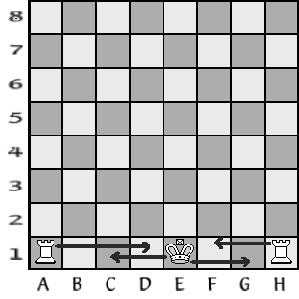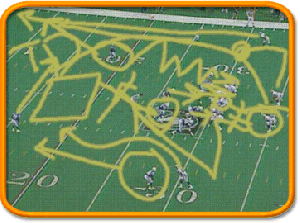Castling. It’s a move in chess that people often take for granted. Once you figure out how to do it, you do it every game for the next three hundred games because you believe that it makes you look smart. You may do it all the time simply because somewhere somehow you were convinced it will would increase your chances of winning for various reasons. I am here to tell you to abandon that train of thought and to keep reading if you want to know if castling is indeed, smart.
First off, let’s cover the rules for castling for those that are new to the game.
Castling is a one time move that involves your king and one of your rooks. To put it plainly, you move your king two spaces to the left or right towards one of your rooks then put that rook on the other side of your king. If you’re new and you’ve paid attention to my articles, you’ll know the king can only move one space in any direction assuming he’s not putting himself in front of the firing squad. Castling allows the king to break that rule for one time only.
The following rules must be met in order to castle:
1) The king and the rook that are attempting to castle cannot have moved already.
- If you’ve already moved the king once, then you can’t castle period.
- If you’ve only moved one of your rooks, you may castle with the remaining rook that hasn’t moved, assuming your king hasn’t moved either.
2) The king cannot castle out of check, through check, or into check.
- If your king is in his original square and is under attack, he cannot castle out of it.
- If your king is going to castle and moves through a square that would put him under attack, he cannot castle.
- If your king would be under attack after castling, he cannot castle.
3) There cannot be any pieces between you and the rook you’re castling with.
- If there are friendly or enemy pieces in the way of the path you’d take for castling, you cannot jump over them to castle.
Simple enough right?
Now that you’re an expert castler you can update your resume’ and impress all your interviewers with said knowledge. It also allows us to examine whether or not castling is indeed “good for you.”
In all the years I’ve played (somewhere over seven hundred, I lost count) I’ve heard so many reasons why castling will win you games and why all the cool kids are doing it. I’ve heard that it puts your king out of danger. I’ve heard that it allows the rook you castled with to support the center. I’ve heard that it’s a more secure position to be in. I’ve heard it puts your king away from the center of the board where all of the action is. How many of those are valid arguments? All of them and none of them.
“…but Vince, how is that possible?” Simple. All of them support a linear, rigid line of thinking. Let me ask you this…would a general send his most valuable man into a section of the battlefield that had little to no protection? Okay, besides Rambo? Just because you can castle, doesn’t mean you should. It’s important to look at the board and see what would happen if you did castle. If your pawns are unstructured on the right side of the board and you see openings to where your opponent could punch through, then use common sense and don’t castle just for the sake of castling.
Will it put your king out of danger as many think castling does? Depends. How secure is your defense on that side? Will it allow your rook to support the center? Depends. Are the pieces in the center of the board intertwined and locked so badly no one is getting through anyway? Is the board open enough in the center to actually put pressure on the enemy line? Does it put your king away from all the action in the center of the board? Depends. Is all of the action really in the center of the board or will you put a big fat bullseye on your king after isolating him into a spot you can’t get to right away should you need to?
For you new players, this may take some time to “feel” as to when it’s safe to castle. If your king is snug and well defended in his original position then leave him where he is. If the center of the board is nice and open and the only thing between an enemy rook or queen and your king is your lone pawn, you may want to consider moving him to a more secure position. In real wars, generals don’t usually retreat to a hidden bunker unless their position becomes dangerously dire. There’s no need for you to do the same unless you need to.
Click Here to return to the main article.
—



